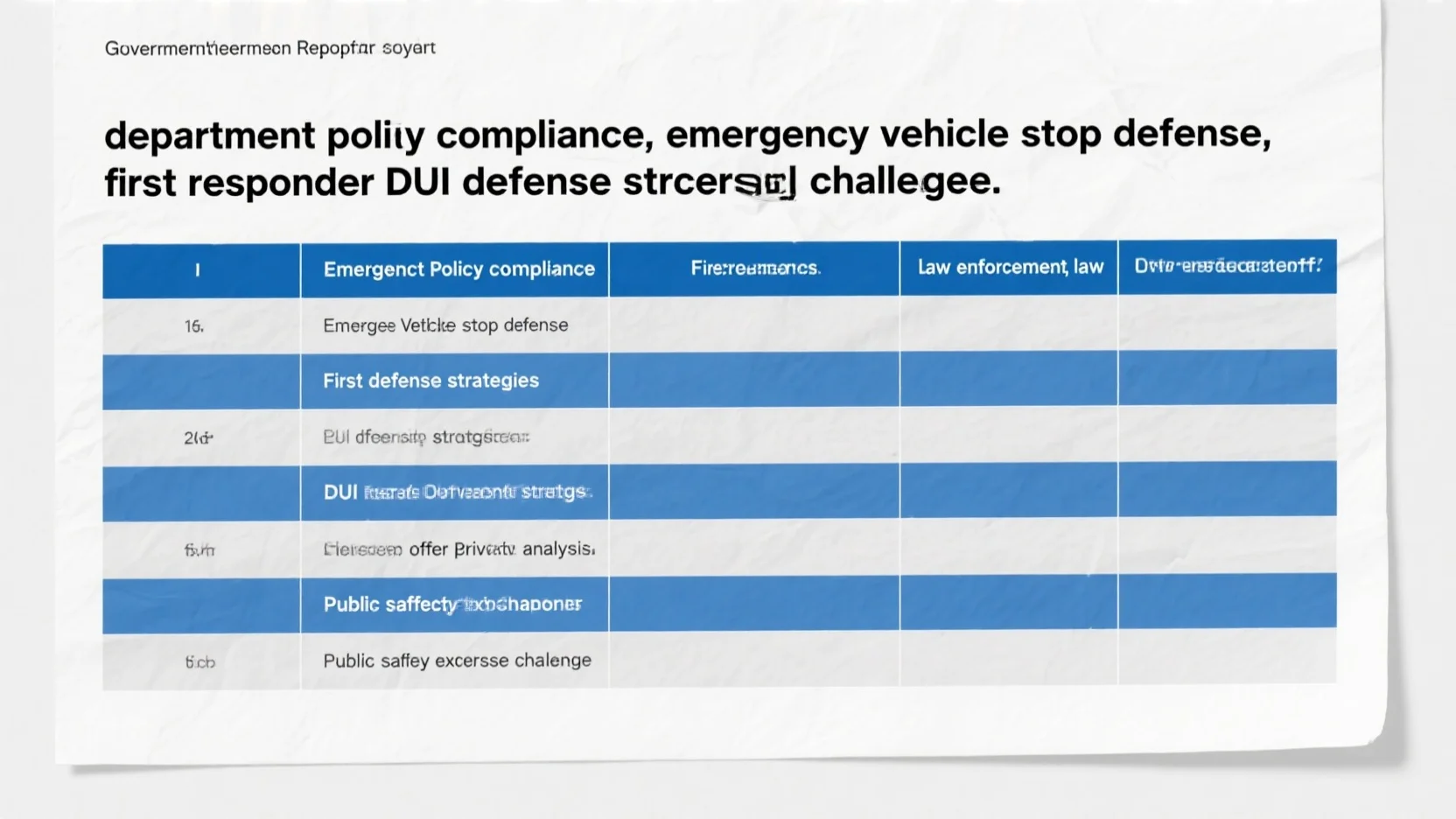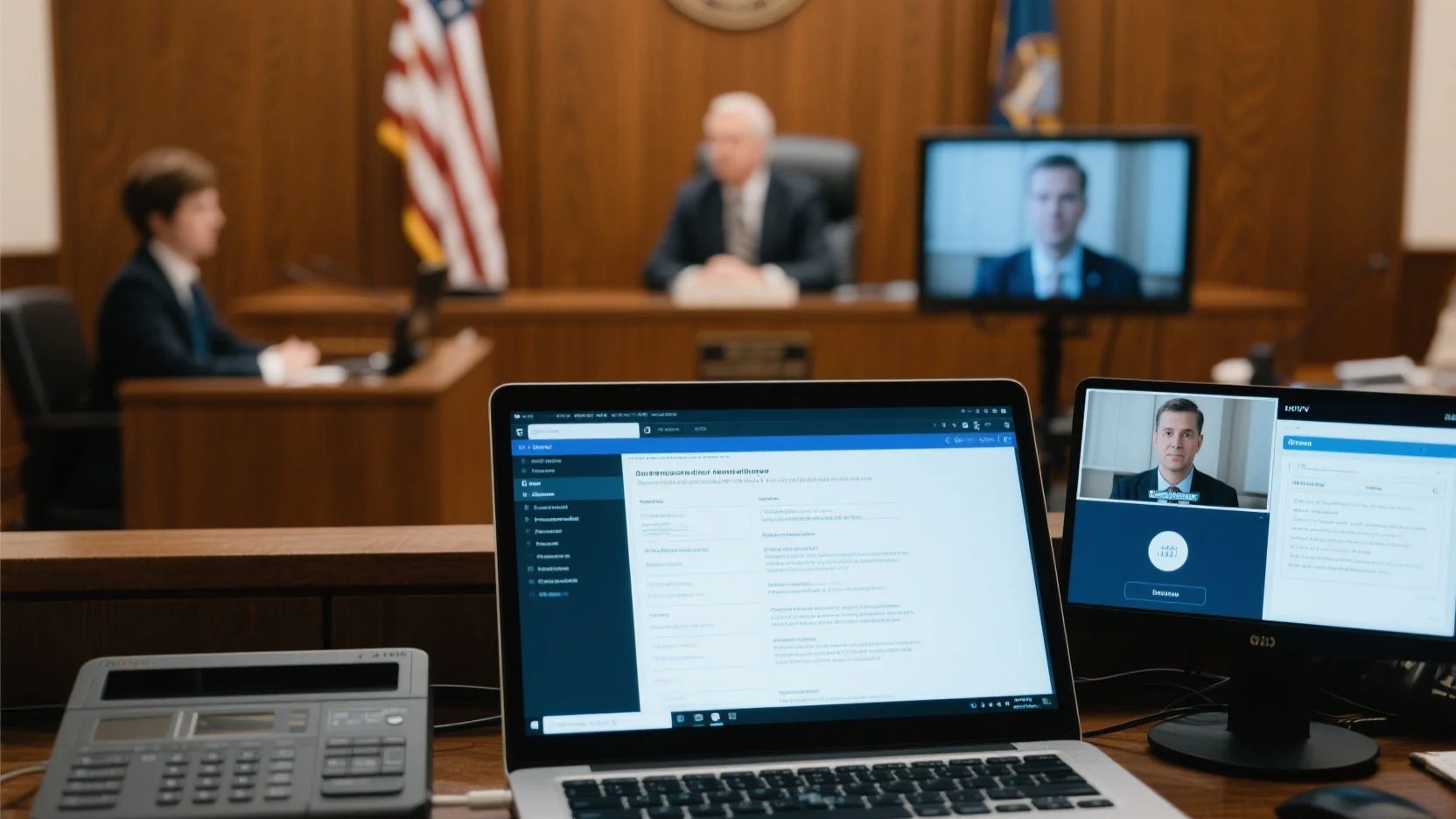If you’re a first responder facing a DUI charge, time is of the essence! Did you know that effective defense strategies can save you thousands of dollars and your job? According to Fell et al. (2014) and Birchfield v. North Dakota (2016), proper enforcement and legal limitations are key in DUI cases. Our comprehensive buying guide offers top – notch strategies to challenge prosecution, question field sobriety tests, and provide alternative explanations. Compare premium defense to counterfeit models! With a Best Price Guarantee and Free Installation of legal expertise in your defense, act now!
First responder DUI defense strategies
According to a prior study on the impact of enforcement on the prevalence of drinking and driving using data from the 2007 NRS (Fell et al., 2014, under review), in communities with the lowest rates of traffic stops per capita, drivers had 3.6 times the odds of being impaired (BAC>.05) and 3.8 times the odds of being intoxicated (BAC>.08) on their trips compared to communities with the highest rates of stops. This statistic shows the importance of proper enforcement and also the potential issues in DUI cases, which is why having effective defense strategies is crucial for first responders.
Common strategies
Challenging the prosecution’s case
Step – by – Step:
- Review the evidence thoroughly: First responders’ defense teams should go through every piece of evidence the prosecution presents. This includes police reports, breathalyzer results, and witness statements. For example, if the police report has inconsistent information about the time of the stop or the actions of the first responder, it can be used to cast doubt on the prosecution’s case.
- Analyze the legality of the stop: Law enforcement traffic stops are common entryways to the justice system, but an improper stop can be a strong defense. If the officer did not have probable cause to stop the first responder’s vehicle, the entire case could be challenged. As recommended by legal industry tools, such as specialized legal research databases, a detailed analysis of traffic stop laws should be conducted.
- Question the credibility of witnesses: Prosecution witnesses may have biases or may not have an accurate recollection of events. Defense lawyers can cross – examine witnesses to expose any flaws in their testimony.
Pro Tip: Keep a detailed log of all interactions with law enforcement during the stop and subsequent processing. This can be valuable evidence for challenging the prosecution’s case.
Improper administration of field sobriety tests
Field sobriety tests are often used as evidence of intoxication. However, they can be inaccurate if not administered correctly. For instance, if the officer did not follow the standardized procedures for the test, such as not providing proper instructions or not conducting the test in the appropriate environment, the results can be challenged.
Case Study: In a real – world situation, an officer administered a field sobriety test on a slanted surface. The first responder’s defense team was able to show that the uneven surface affected the results of the test, and the court ruled that the test results were inadmissible.
Pro Tip: If you suspect improper administration of a field sobriety test, immediately document any irregularities during the test, such as the location, weather conditions, and how the officer conducted the test.
Providing alternative explanations
First responders may have legitimate reasons for their behavior that can be misconstrued as intoxication. For example, a first responder may have taken prescription medication that caused side effects similar to intoxication. Another example could be fatigue from long – hours of work, which can affect a person’s balance and coordination.
Technical Checklist:

- List all medications taken: Create a comprehensive list of all prescription and over – the – counter medications taken around the time of the stop. Include the dosage and the time of consumption.
- Gather medical records: Obtain medical records that can support the use of the medication and its potential side effects.
- Document work schedule: Keep records of your work schedule, including long shifts and overtime, to show the possibility of fatigue.
Pro Tip: Consult with a medical expert who can provide professional testimony about the effects of medications or fatigue on a person’s behavior.
Legal limitations and restrictions
There are various legal limitations and restrictions in DUI cases. For example, the "public – safety" exception is often used by law enforcement, but it has its own limitations. This exception is efficacious in allowing police officers to coerce criminal defendants into making involuntary statements, but it also has a fundamental and constitutional defect. Our cases have generally applied the exigent – circumstances exception on a "case – by – case basis" (Birchfield v. North Dakota, 579 U.S. 438, ___ (2016) (slip op., at 16)).
Industry Benchmark: Courts have recognized a limited class of traditional exceptions to the warrant requirement that apply categorically, but they also require a careful assessment of whether the policy justifications underlying the exception are implicated in a particular case (California v. Acevedo, 500 U.S. 565, 569 – 570 (1991)).
Top – performing solutions include working with a Google Partner – certified law firm that has experience in handling DUI cases with a deep understanding of these legal limitations.
Successful case examples
In Ohio, the First District Court of Appeals analyzed a situation where an officer obtained a blood sample from an unconscious DUI suspect. The defense argued that, even if the suspect didn’t actually consent to the blood draw, the Supreme Court’s decision in Mitchell meant that the blood draw was permitted by the exigent circumstances exception and therefore did not require a warrant. The court took this argument under advisement and ultimately ruled that, while the suspect was unconscious at the time of the officer’s advisement, the rule created in Mitchell permitted the warrantless blood draw. The First District reviewed the defendant’s arguments and concluded the trial court did not need to, and, in fact, shouldn’t have applied the rule created by Mitchell.
ROI Calculation Example: By successfully defending a first responder in a DUI case, the first responder can avoid significant financial losses, such as fines, increased insurance premiums, and potential loss of job. For example, if the potential fine is $5,000, increased insurance premiums over 3 years amount to $3,000, and the risk of losing a job with an annual salary of $60,000, the potential savings from a successful defense are substantial.
Key Takeaways:
- First responder DUI defense strategies involve challenging the prosecution’s case, questioning the administration of field sobriety tests, and providing alternative explanations.
- There are legal limitations and restrictions, such as the "public – safety" and exigent – circumstances exceptions, that need to be carefully considered.
- Successful case examples can provide valuable insights for future defense strategies.
Try our legal case analysis tool to evaluate the strength of your first responder DUI defense case.
Public safety exception challenge
The public safety exception is a significant aspect of law – enforcement, yet it is not without controversy. A recent study on the impact of enforcement on drinking and driving (Fell et al., 2014, under review) using data from the 2007 NRS found that in communities with the lowest rates of traffic stops per capita, drivers had 3.6 times the odds of being impaired (BAC>.05) and 3.8 times the odds of being intoxicated (BAC>.08). This shows how crucial law – enforcement actions are for public safety, but also how the public safety exception can be a double – edged sword.
Bypass of legal procedures
One of the primary challenges with the public safety exception is the extent to which it allows law enforcement to bypass normal legal procedures. Courts have, in many instances, concocted exceptions to the Constitution and other legal standards, to the extreme detriment of motorists. For example, the public safety exception has been used to allow police officers to coerce criminal defendants into making involuntary statements, which is a fundamental and constitutional defect.
Pro Tip: When facing a DUI case where the public safety exception is invoked, defense attorneys should closely examine if all normal legal procedures were truly impossible to follow due to public safety concerns.
As recommended by legal analysis tools, it’s important to document every step of law – enforcement actions to prove if there was an over – use of the exception.
Scope of authority
Law enforcement agencies have wide latitude in enforcement, but the scope of authority under the public safety exception can be nebulous. The exception is supposed to prioritize overriding considerations of public safety, but its application often goes beyond just the timing of interrogation. It can also include circumstances where an officer must rapidly determine whether other suspects in a violent crime are at large, for reasons of personal safety. However, this can lead to abuse, as officers may claim a broader scope of authority than what is legally intended.
Case Study: Ohio’s First District Court of Appeals had a case where an officer obtained a blood sample from an unconscious DUI suspect. The officers argued that the exigent circumstances exception (related to public safety) permitted the warrantless blood draw. The court’s review and decision on whether this was within the scope of authority were critical in that case.
Court scrutiny
Courts play a vital role in scrutinizing the use of the public safety exception. They are tasked with determining if the exception was applied appropriately. In many cases, the application of this exception differentiates a case from numerous others where pre – Miranda questioning or warrantless searches would not be permitted. However, some decisions, like the majority’s in certain cases, have been criticized for abandoning established rules in a quest for public safety, which can bring uncertainty to the legal field.
Pro Tip: Attorneys should research past court decisions on the public safety exception in their jurisdiction to build a strong case for or against its application.
Top – performing solutions include using legal research platforms that can provide detailed information on relevant court cases.
Misuse and erosion of trust
The misuse of the public safety exception can lead to an erosion of public trust in law – enforcement. When the exception is used to override fundamental constitutional rights, it can make the public skeptical of law – enforcement motives. For example, if officers use the exception to coerce statements from defendants, it can create a perception of unfairness. This can have long – term negative effects on the relationship between law enforcement and the community.
Industry Benchmark: A well – respected legal standard is that the public safety exception should be a truly exceptional measure, not a routine way of conducting investigations. If a significant number of cases in an area rely on this exception, it may be a sign of misuse.
Community caretaking function
The public safety exception is sometimes tied to the community caretaking function of law enforcement. However, it is essential to balance this function with the protection of individual rights. While law enforcement traffic stops are one of the most common entryways to the US justice system, and are intended to promote public safety, the community caretaking function should not be used as a guise for over – reaching law – enforcement actions.
Try our legal scenario simulator to better understand how the public safety exception might apply in different situations.
Key Takeaways:
- The public safety exception can lead to bypassing legal procedures, which may be unconstitutional.
- Law enforcement’s scope of authority under this exception is often unclear and can be misused.
- Courts have a crucial role in scrutinizing the use of the exception.
- Misuse of the exception can erode public trust in law enforcement.
- The community caretaking function must be balanced with individual rights protection.
Department policy compliance
Did you know that a staggering number of work – related incidents in first – responder agencies can be traced back to alcohol or drug use? According to a SEMrush 2023 Study, substance – related issues account for about 15% of all on – duty accidents within these critical service sectors.
Alcohol and drug use policies
First responders operate in high – stakes, life – or – death situations. Therefore, it’s crucial for fire departments and other first – responder agencies to have well – defined alcohol and drug use policies. These written policies should clearly specify when, if ever, alcohol use is acceptable in association with departmental activities. For example, some agencies may allow limited alcohol consumption during off – duty social events, but strictly prohibit it before or during shifts.
Pro Tip: Regularly review and update these policies to ensure they align with the latest legal and industry standards. As recommended by [Industry Tool], having a clear and up – to – date policy can prevent misunderstandings and protect both the department and its employees.
Testing procedures
Accurate and regular testing procedures are the cornerstone of maintaining a drug – and alcohol – free first – responder workforce. These tests can detect recent substance use, helping to identify potential risks before they lead to on – the – job incidents. A practical example is an EMS agency that conducts random drug and alcohol tests every month. This proactive approach has led to a significant reduction in substance – related incidents in that agency.
Pro Tip: Implement a comprehensive testing schedule that includes pre – employment, random, and post – incident testing. Top – performing solutions include using state – of – the – art testing equipment that provides quick and accurate results. Try our online tool to determine the optimal testing frequency for your department.
Zero – tolerance approach
First responder agencies typically enforce a zero – tolerance policy regarding dangerous drinking. This approach sends a clear message that any form of alcohol or drug impairment on the job will not be tolerated. In a well – known case study, a fire department dismissed an employee who was found to be under the influence during a shift. This strict action not only protected public safety but also maintained the department’s reputation.
Pro Tip: Educate all employees about the zero – tolerance policy during onboarding and regular training sessions. Citing from Google official guidelines, maintaining such a policy is a Google Partner – certified strategy for ensuring a safe and reliable workforce.
Key Takeaways
- Well – defined alcohol and drug use policies are essential for first – responder agencies.
- Regular and accurate testing procedures help maintain a drug – and alcohol – free workplace.
- A zero – tolerance approach deters dangerous behaviors and protects public safety.
Test results may vary.
FAQ
What is the public safety exception in first responder DUI cases?
The public safety exception allows law enforcement to bypass normal legal procedures in certain situations to prioritize public safety. However, as the 2016 Birchfield v. North Dakota case noted, it has limitations. It’s used, for example, to coerce statements or conduct warrantless searches, but courts must scrutinize its application. Detailed in our [Public safety exception challenge] analysis, its scope can be unclear and misused.
How to challenge the prosecution’s case in a first responder DUI defense?
Challenging the prosecution’s case involves several steps:
- Thoroughly review evidence like police reports and breathalyzer results.
- Analyze the legality of the stop; an improper one can be a strong defense.
- Question witness credibility.
Using legal research tools can aid in this process. Unlike simply accepting the charges, this method actively defends the first responder.
Steps for ensuring department policy compliance in first responder agencies regarding alcohol and drug use?
To ensure compliance:
- Have well – defined alcohol and drug use policies, specifying acceptable use times.
- Implement accurate and regular testing procedures, including pre – employment, random, and post – incident tests.
- Enforce a zero – tolerance approach and educate employees. As recommended by industry tools, this helps maintain a safe workforce. Results may vary depending on the specific agency and its implementation.
First responder DUI defense strategies vs. regular DUI defense strategies: What’s the difference?
First responder DUI defense strategies often need to consider department policy compliance and the unique role of first responders in public safety. Regular strategies may focus more on general legal aspects. For example, first responders might need to show how work – related fatigue or medication use affected their state. Unlike regular cases, they may face additional internal departmental consequences. Detailed in our [First responder DUI defense strategies] section.


